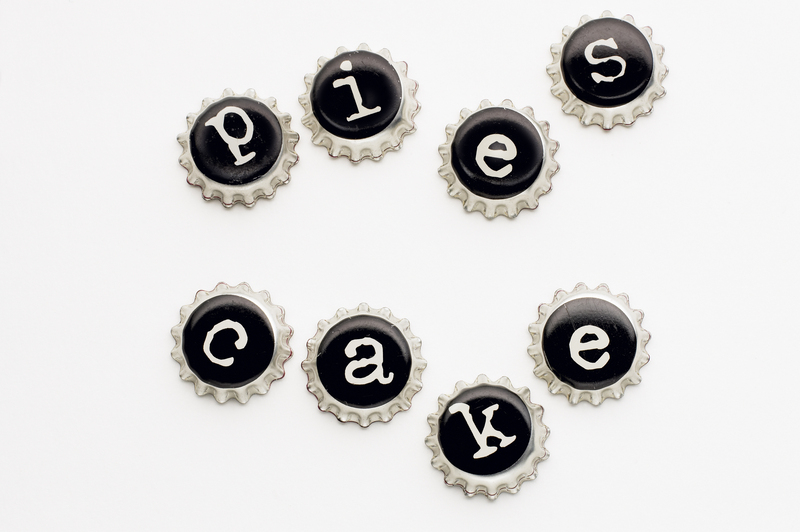Tips for Donating or Recycling Pots and Pans
Pots and pans are essential items in most kitchens, helping us whip up everything from quick weeknight meals to elaborate holiday spreads. However, over time, cookware can become scratched, warped, or simply outlived its usefulness as you upgrade or change your cooking style. If you find your cabinets crowded with excess or old cookware, you may wonder what to do with them. Instead of sending them straight to the landfill, there are sustainable, environmentally friendly methods to part ways with your pots and pans. In this article, we'll dive into the most effective tips for donating or recycling pots and pans, ensuring your old cookware finds a new purpose while minimizing environmental impact.
Why Think Beyond the Trash Bin?
Pots and pans are typically made from materials such as stainless steel, aluminum, and copper. These metals are not only recyclable, but they also require significant resources to produce in the first place. Throwing cookware away contributes to landfill waste and squanders the opportunity to recycle valuable materials. Additionally, many organizations and individuals can genuinely benefit from gently used cookware donations. By choosing to donate or recycle, you make a tangible positive impact on both the environment and your community.

Can All Pots and Pans Be Donated or Recycled?
Before you begin, it's essential to assess the condition and material of your cookware. Here's a quick checklist:
- Material: Most metal-based cookware (such as stainless steel, copper, and aluminum) can be recycled. Nonstick pans, ceramic, and cast iron may have other considerations.
- Condition: Donations should generally be in usable condition. Minor scratches or discoloration might be acceptable, but avoid donating severely damaged or unsafe items.
- Coatings: Nonstick coatings deteriorate over time. Peeling or flaking pans are unsuitable for donation but may still be recyclable.
- Accessories: Lids and handles can add value, but if separated, make sure to dispose of or donate accordingly.
Top Tips for Donating Pots and Pans
Donating pots and pans is an excellent way to extend their life and support individuals or families in need. But where and how can you donate cookware responsibly?
1. Identify Where to Donate
- Local Thrift Stores: Charities like Goodwill, Salvation Army, and Habitat for Humanity ReStores accept gently used kitchenware. Call ahead to confirm that they currently accept cookware.
- Homeless Shelters and Transitional Housing: Many shelters run kitchens or help beneficiaries set up independent living. Pots and pans are essential items for these programs.
- Food Banks and Soup Kitchens: Community meal programs may use donated cookware or offer them to families in need.
- Churches or Community Centers: These organizations often have outreach programs and can connect your donation with those who need it most.
- Resettlement Organizations: Nonprofits assisting refugees or disaster victims frequently seek kitchen essentials for those starting over.
- Online Community Platforms: Use websites like Freecycle, Craigslist, Facebook Marketplace (in "free" sections), or Nextdoor to offer pots and pans directly to neighbors.
2. Prepare Your Pots and Pans for Donation
- Clean Thoroughly: Wash and scrub away any food, stains, and grease.
- Inspect for Damage: Ensure handles are sturdy and there are no sharp or dangerous edges.
- Bundle With Lids: Matching pots with corresponding lids makes donations more useful.
- Group Similar Items: Offering a set is more beneficial than single, mismatched pieces.
- Label Special Features: Mark if they are suitable for induction, nonstick, oven-safe, etc.
If possible, include a note on care or any tips you have for using the cookware. This small gesture can be especially meaningful for someone learning to cook or starting out.
3. Ask About Tax Deductions
When donating to a registered charity, you might be eligible for a tax deduction. Request a donation receipt, estimate the value of your items, and keep the paperwork for your records.
Responsible Pot and Pan Recycling Tips
When recycling pots and pans that can't be donated, you'll need to navigate your local recycling system. Here are the best practices for eco-friendly disposal:
1. Confirm Local Recycling Guidelines
- Check With Municipal Programs: Some curbside services accept scrap metal, but most do not allow pots and pans in household recycling bins.
- Find a Scrap Metal Facility: Look for dedicated scrap metal recyclers in your area. Many accept household metals, including pans--even those with plastic handles.
- Contact Household Hazardous Waste Drop-Offs: Some municipalities organize special collections for hard-to-recycle kitchenwares.
2. Material-Specific Considerations
- Stainless Steel & Aluminum: Easily recyclable. Remove plastic or silicone parts if possible, though many centers can handle mixed materials.
- Copper: Highly valued--ensure to separate for higher scrap value if recycling large quantities.
- Nonstick Coatings (Teflon): Traditional recycling doesn't process nonstick coatings well, but some specialized facilities or brand take-back programs accept them.
- Cast Iron: Recyclable at most scrap yards and prized for material value!
- Glass & Ceramic: Not typically accepted in metal recycling; check with local waste management for proper disposal or opportunities for creative reuse.
3. Remove Non-Recyclable Components
- Plastic Handles: If possible, unscrew and remove plastic or silicone handles. These can be disposed of as regular waste unless your municipality has specialized programs.
- Broken Glass Lids: Do not place in glass recycling bins. Wrap shattered glass in newspaper and dispose according to local guidelines.
4. Explore Brand Take-Back Programs
Some cookware brands have take-back or recycling initiatives. For instance, companies like T-fal or TerraCycle partner with brands to recycle old pans, including nonstick-coated options. Check the manufacturer's website or contact customer service for available options.
5. Get Creative: Upcycling and Repurposing Ideas
If your pots and pans aren't suitable for donation or traditional recycling, why not consider a second life as something entirely new? Here are some ingenious upcycling ideas:
- Planters: Turn deep pots into quirky outdoor or indoor planters.
- Birdbaths or Feeders: Use shallow pans for wildlife in your garden.
- Decorative Wall Art: Arrange a collage of vintage cookware for rustic kitchen charm.
- Organizer Trays: Use old baking trays to organize tools, hardware, or craft supplies.
- Serving or Display Bowls: Unique pans can become centerpiece fruit bowls or display dishes.

Common Mistakes to Avoid When Disposing of Cookware
- Never mix cookware with regular recyclables unless your municipality explicitly allows it. Scrap metal has different processing requirements.
- Don't donate damaged or unsafe pans--especially those with flaking nonstick coating or missing handles.
- Avoid landfill disposal if possible. Metal cookware lasts virtually forever and can be harmful to the environment.
- Don't forget to call ahead before donating or recycling to ensure your items will be accepted.
Conclusion: Give Your Old Pots and Pans a Purpose
With a thoughtful approach, your unwanted cookware can be donated, recycled, or repurposed rather than discarded. Donating pots and pans can help equip neighbors in need or support charitable causes, while recycling minimizes environmental impact and conserves precious resources.
Remember to assess your inventory, research your options locally, and prepare your items thoughtfully. If donation or recycling isn't feasible, creative upcycling can extend the usefulness of old kitchenware in new and surprising ways.
By following the tips for donating or recycling pots and pans in this guide, you ensure that your cookware hands over from your kitchen to its next destination responsibly, sustainably, and for the greater good.
Quick Checklist for Donating or Recycling Cookware
- Assess condition and material
- Find a suitable donation center or recycling facility
- Clean and prepare items
- Remove or separate non-metal components
- Explore upcycling opportunities if other options aren't available
- Request donation receipts if needed
With just a little effort and these helpful tips for disposing of old pots and pans, you can make a positive impact for both the planet and your local community!